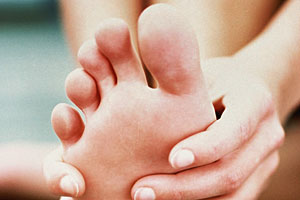One wonderful thing about nature is the balance between disease-causing and disease-preventing forces that can be easily recognized. And that is true about handling your case.
YOU can protect yourself from the “disease of kings” by eating foods for the “kings” (don't mind my play of words).Much of gout can be minimized through selectively eating foods that provide no new raw material for the production of uric acids.
First, let us cover what foodstuff to avoid. By plugging the dietary sources, you can somehow exert control on uric acid output. Here are foods with very high purine content (up to 1000 mg per 100 grams): anchovy, brain, gravy, kidney, liver, sardines and sweetbreads (thymus and pancreas).
Foods with moderately high purine levels (5-100 mg) include asparagus, bacon, beef, bluefish, calf tongue, carp, cauliflower, chicken, codfish, crab, duck, goose, halibut, ham, beans, lamb, lentils, lobster, mushrooms, oatmeal, oysters, peas, pork, sheep, shellfish, spinach, tripe, trout, turkey, veal and venison.
For regular drinkers, a serving of 13.6 grams alcohol (equivalent to 340 ml beer, 43 ml spirit, or 142 ml wine) increases blood uric acid by 40 micro-mol/L within 180 minutes. Studies noted, however, that it is not so much the alcohol that gives the problem but the other contents of alcoholic drinks. A standard beer, for example, contains 1 gram alcohol per 100 ml. But it also contains 8 mg purine. In fact, low alcoholic beers contain more.
Now let us proceed with foodstuff that not only contains minimal, if at all, raw materials for uric acid production, but also increases excretion mechanism of your body... [READ MORE]
This article appears in Sun-Star Cebu newspaper on 11 October 2012.

Comments
Post a Comment